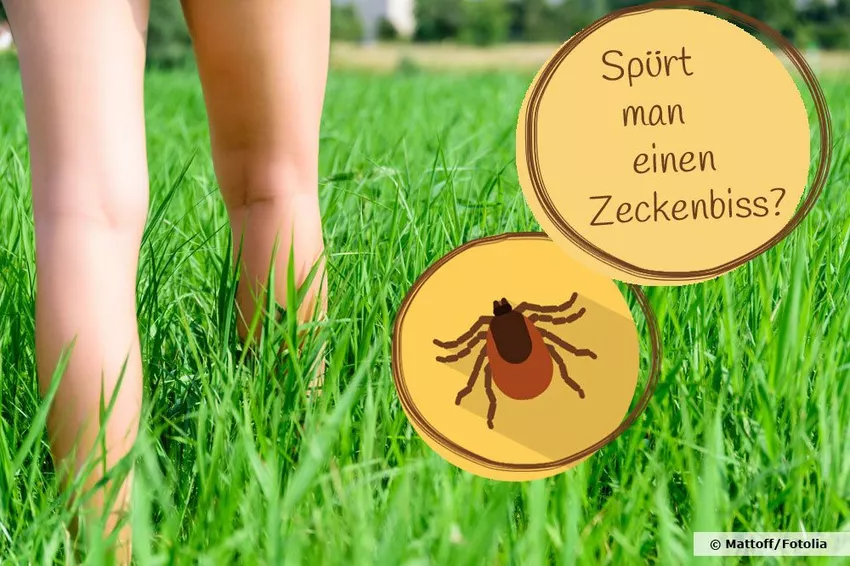
A tick bite is often only noticed by accident. This is because you cannot feel the bite and the arachnids are so small that we hardly see them on the skin. In addition, ticks can bite into the skin for days or weeks, which is why it is often difficult to recap when the event happened. However, once the tick has been discovered, fear increases because tick bites are considered dangerous.
host finding
Depending on the species, ticks follow two different strategies to reach a host. The so-called lurkers, like the common woodbuck, climb onto a blade of grass or a bush and wait for a potential host to come by. If he touches the tick, it will hold on to him. The so-called hunters actively search for hosts, moving five to eight meters per hour.
Once the tick is on the host, it crawls around on the body until it has found a suitable place to suck blood, because ticks are very choosy in this regard. From the point of view of the arachnids, optimal places for the puncture are the ones
- damp,
- warmth,
- well perfused and
- thin skin
own. This is why ticks bite people very often
- in the hollow of the knee,
- at the hairline,
- in the groin and
- behind the ears
to. But these are just the preferred places, because ticks are (and have been) found in all sorts of places on the human body.
tick bite
A tick bite is actually a tick bite. It occurs when the tick gains access to blood. Ticks use their sucking and biting apparatus to get at the blood. They bite or cut into the skin first. They then insert the hypostome, a type of barbed proboscis, into the skin and begin sucking blood.
notice: You don't notice or feel the actual tick bite, because the ticks secrete a substance when they bite, which anesthetizes the bite.
Since ticks go about their work unnoticed by humans, you will only recognize the parasite once it has already bitten itself. However, it is also possible that you do not even notice the arachnid on your body and only notice the tick bite after it has already left you. As a rule, the males only suckle for a few days. However, the females, who also need the blood to form eggs, can suckle on you for several weeks.
symptoms
A tick bite goes unnoticed for the time being, since the arachnids, before they start eating, secrete a salivary secretion that contains various components that do not let us feel the bite or the subsequent sucking:
an anticoagulant to prevent blockage of the hypostome
- Adhesive for firmly anchoring the mouthparts in the skin
- Anesthetic to prevent itching and similar symptoms of a sting
- anti-inflammatory agent to prevent the body's own defences
The fact that you do not feel the tick bite is not particularly bad, since the bite itself is not dangerous for humans. You can recognize a tick bite by the following symptoms, which usually only appear after the animal has already fallen off again:
- itching
- swelling
- chills
- flu-like signs
The tick bite only becomes dangerous when the tick transmits pathogens in this way. This is how TBE viruses and Borrelia bacteria, which can cause serious infectious diseases, get into the human body unnoticed. Therefore, you should carefully monitor the site of the tick bite. The incubation period for TBE (tick-borne encephalitis) lasts about one to two weeks. The first symptoms are very similar to those that can occur with a tick bite. You can usually recognize Lyme disease by the so-called blush. This is a ring of redness around the bite.

